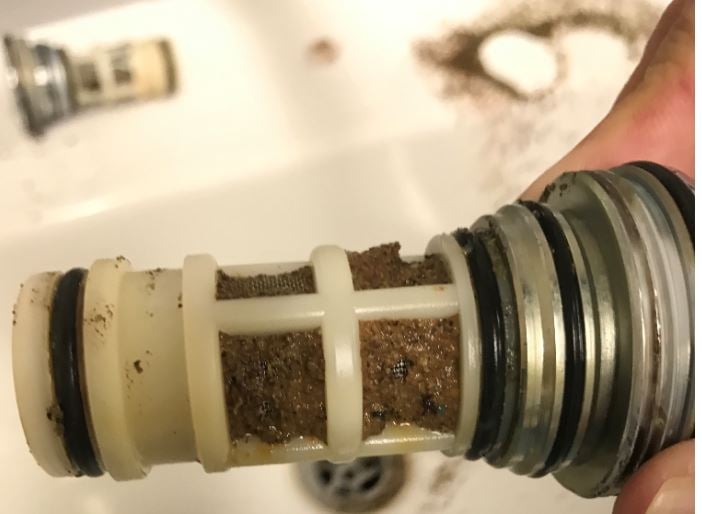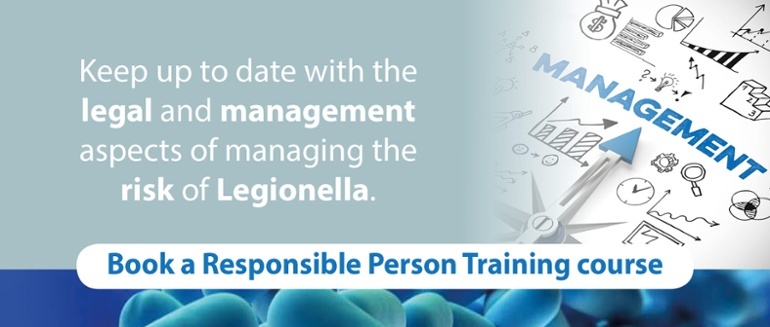
The importance of knowing; ‘when’ to use supplementary control and ‘which’ control to use!
In ‘Part 1 – Traditional Control’ we discussed the importance of executing the basics of good water management and the implications of falling short in this regard.
Part 2 - Supplementary Control
Moreover, we now understand that whilst temperature control and regular water use, supported by a Legionella flushing regime where necessary, are important for maintaining a well-managed water system, this control strategy may have limited success when re mediating a system affected by mature biofilm, which often necessitates the use of supplementary control methods.
Water Disinfection
Before discussing the use supplementary control methods it may first of all be prudent to describe the different ways in which water disinfection can be achieved (other than the use of heat). In the main, disinfection can be achieved using the following ‘supplementary’ control methods:
- Chlorine;
- Chlorine Dioxide;
- Copper – Silver Ionisation;
- Ultra-violet light (UV);
- Filtration.
All of these control strategies have both limitations and advantages that should be considered before use and failure to appraise the ‘suitability’ of such controls may have a negative impact on treated water systems.
Chlorine is a mainstay in water treatment and often the chemical of choice following the; commissioning of new estates, completion of remedial works or cleaning of water storage vessels. Chlorine can be described as a balance of three different forms:
- Chlorine gas;
- Hypochlorous acid;
- Hypochlorite ion.
The form which predominates often depends upon the temperature and pH of water, which helps us to identify when it’s use may be suitable or unsuitable. For example, ‘wholesome’ water as it’s delivered from a mains-supply should be of neutral pH, whereby the ‘hypochlorous acid’ form will often predominate. hypochlorous acid is known for being the stronger biocidal form of Chlorine which therefore substantiates it’s use for effectively treating potable water systems.
Conversely, should there be a ‘shift’ in pH then this may impact on the form of chlorine present and associated effectiveness. For example, the process of heating and cooling water may increase the alkalinity of water and even what may seem a small shift in pH (from 7-8) will significantly impact upon the form of chlorine which predominates. Moreover, at pH 8 the form of chlorine present is likely to be hypochlorite ion, which still has biocidal properties (akin to commercially available bleach), but significantly weaker than the hypochlorous acid form of this chemistry. Therefore, when managing more alkaline waters (e.g. cooling towers), this may necessitate choosing a chemistry which offers stronger biocidal properties at a higher pH, hence why bromine rather than chlorine may sometimes be favoured.
The temperature of water is also of consideration as at high temperature halogen-based biocides, such as chlorine & chlorine dioxide may ‘gas-off’; which often supports their suitability for disinfecting cold water systems. Understanding how chemistries react with the environments in which they are used is fundamental to their selection and failing to do this may not only impact upon the effectiveness of disinfection but also impact upon cost and the integrity of treated water systems.
Whilst we indicate the use of chlorine for various disinfection works (mentioned above), this chemistry may not always be suitable for use. In addition to pH and temperature considerations already discussed, it’s important to consider other variables which may impact upon the effectiveness of such chemistries such as the presence of corrosion scale/particulate and the composition of biofilm within water systems. For chemistries such as chlorine to be effective within treated systems it’s important to ensure that the desired residual is achieved. Therefore, it’s prudent to understand that such chemistries have a working half-life and that contaminants may impact upon this and subsequent effectiveness.
Gaining an understanding of how chemistries interact with water and associated contaminants encourages us to be selective with their use rather than dosing water systems indiscriminately. This is recognised within the HSE’s technical guidance HSG274 Part 2; which details the importance of identifying a suitable treatment for ‘mature biofilm’ – describing limited success with chlorine and suggesting that chlorine dioxide, or other chemicals, may yield more favourable results.
As mentioned earlier in this blog, whilst it’s important to consider the efficacy of the treatment in relation to microbial control, the impact on the water systems following disinfection must also be considered. Moreover, the oxidative potential of chemistries such as chlorine and chlorine dioxide may corrode or fracture water systems – depending on the materials of construction – thus impacting on the longevity of treated systems. Corrosion scale, a by-product of chemical disinfection with oxidising biocides, may also provide a source of nutrients for microorganisms to thrive on. Therefore, whilst the use of such chemistries may yield favourable results when treating systems affected by waterborne contaminants such as Legionella, their misuse or indiscriminate use may be counterproductive by creating a source of nutrients for recolonisation following a loss of control in the future.
Supplementary control methods also extend to; copper/silver (Cu/Ag) ionisation, UV and filtration – all of which have benefits and limitations which are to be described further in Part 3 – Supplementary Control – the use of Cu/Ag ionisation, UV & Filtration.
Feel free to reach out if you have any questions about this blog or if you would like to consult with one of our experts for further advice on water hygiene.
Editors Note: The information provided in this blog is correct at date of original publication - February 2020.
© Water Hygiene Centre 2020








